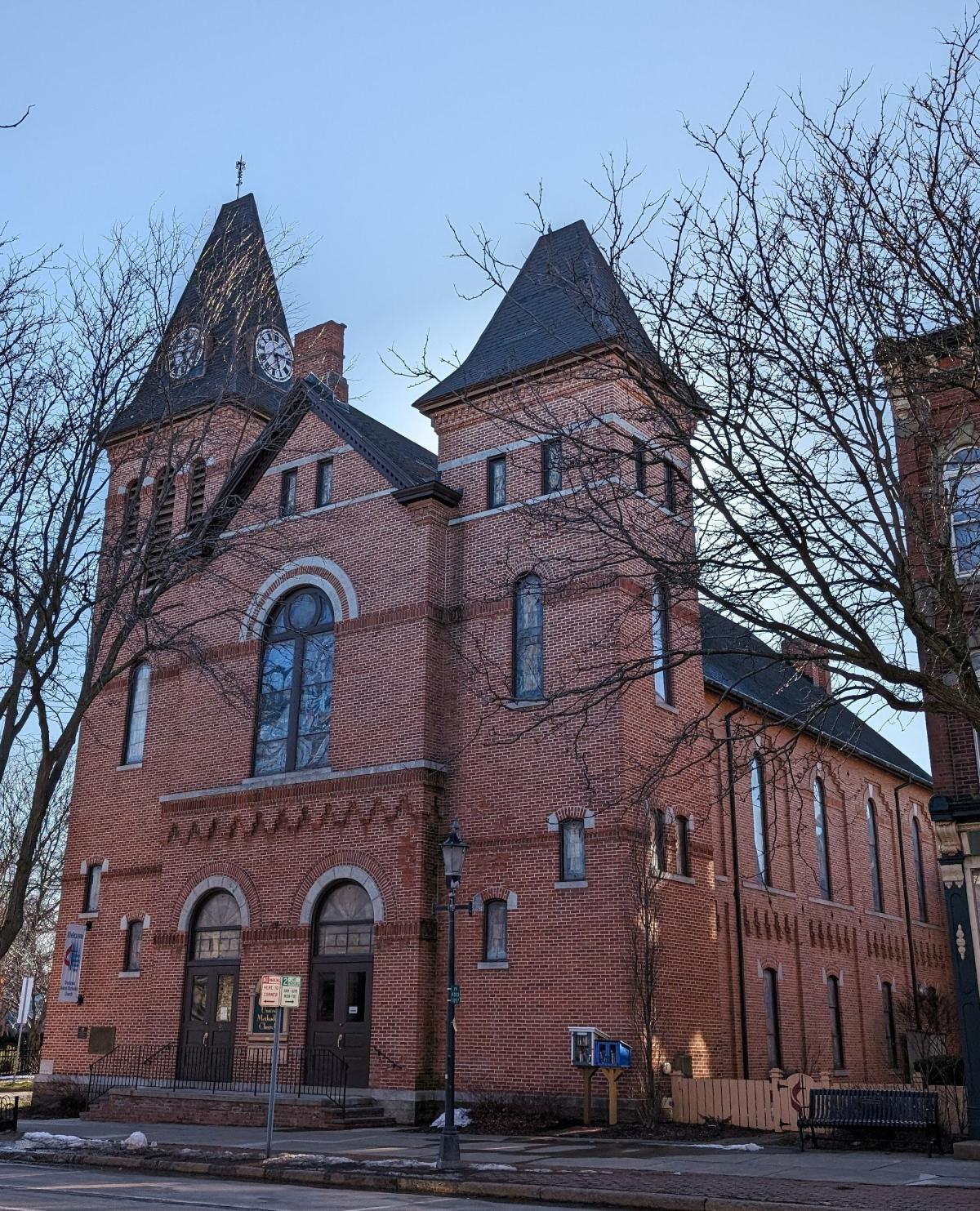Alex Junge rips off the Creeping Charlie growing on the side of a lot overlooking Interstate 94 in St. Paul’s Merriam Park. The fast-growing weed is not native to Minnesota, but has been made at home for centuries, he explains. Beer-drinking European explorers likely introduced the invasive pest in the mid-17th century as a purgative before the widespread use of hops.
“It was actually brought to Minnesota by the Saxons,” Junge said, waxing philosophical about his relationship with the most difficult flora to love. “It’s all about control. It’s never about elimination.”
With something resembling boyish enthusiasm, Junge, 37, walks through the Merriam Station Community Garden, pointing to juicier neighbors: a budding peach tree, a plum tree soon to follow, an apple tree at the bottom of the hill. There is a tall white oak almost as old as the state itself, and another a short distance to the west. One of his edible garden plots grows peppers, tomatoes and, once upon a time, grapes – give that effort a few more years – while his second plot is home to all manner of native wildflowers: honeyberry, wild bergamot, the pitcher plant, the prairie dock, the pale Indian plantain, the coneflower and even the Maximilian sunflower, which could one day reach its own height, or greater.
The busy clatter of I-94 downhill beyond the street at Gilbert Avenue bothers him no more than the railroad tracks at Prior Avenue to the east. With or without his two hearing aids, Junge, who grew up in Highland Park, is much more attuned to the sounds of progress, evident in the hum of three man-made beehives that attract bees by the hundreds, if not thousands. ambitious fellow gardener turned beekeeper. He doesn’t dare get too close, but even from a few meters away the swarms are a sight to behold.
The progress is also evident in the plastic tarp, which is about 75 feet long and 30 feet wide and is held in place by stones along the slope of the hill. It will take a year to kill the grass underneath, and more weeding and hoeing to prepare the soil for planting wildflowers in the community that Junge, a lead organizer of the initiative, can’t wait to be part of to make.
Gardening through difficult times
Merriam Station was founded twelve years ago by diehard volunteers on and around a sloping embankment overlooking the deep channel of the highway. It has grown into one of the larger community gardens in St. Paul, with 100 plots and nearly 200 members committed to organic and organic farming. environmentally sustainable gardening.
It has also become something of a second home for Junge, whose personal caregiver in high school introduced him to the generous world of plants at a time when not everyone was emotionally generous toward their autism. Junge, who has Asperger syndrome — a neurodevelopmental disorder — has used his gardening skills to green up the backyard of the small group home where he has lived for the past 13 years on St. Paul’s East Side.
Gardening has gotten him through some of the tough times, including the death last year of his roommate, a man he calls only Casey, from cancer.
The community garden has also helped others.
On the far east side of the Merriam Station lots, just off Prior Avenue, a memorial garden houses a plaque for a member’s grandson: Alan Geisenkoetter Jr., an 8-year-old who was killed in 2018 when a repeat drunk driver snowmobiled there through it rode the portable ice fishing house that Alan’s father had set up on a lake in Chisago County. Alan – who was flown to Gillette Children’s Specialty Healthcare in St. Paul with head injuries – spent five days in critical condition before dying from injuries that his family said at the time were much more serious than initially suspected.
“The whole community came together to create that garden,” says Junge, who knows the well-tended flower garden as “The Little Alan Garden.” During Sunday evening meetings around the fire pit, members meet and strategize for even more projects.
A range of talents
While weeding in the memorial garden, garden coordinator Noah Kurth said he appreciates Junge’s deep knowledge of plants and insects, and his willingness to lend a hand where needed.
Junge has the same appreciation for Kurth.
“He’s a nice guy who can grow a really big beard if he wants to,” he explained.
Merriam Station attracts a wide range of gardening talent, including newcomers to the field, and a waiting list. Sometimes it’s best to let people make their own mistakes and offer guidance if and when they are open to it.
“We’re not fans of micromanaging people’s conspiracies,” Kurth said.
As Junge walks along the curb of the memorial garden, near the turning point of the driveway where a personal care worker waits in a van to take him back to his group home, Junge advances toward Spotted Knapweed, one of the more deceptively attractive and preternaturally aggressive of the group. invasive weeds. Everything worth loving is worth protecting, as gardening has taught him.
‘Seeing things grow’
Junge, who has a part-time job as a kitchen assistant at the University of St. Thomas during the winter months, calls the university “a nice place.”
Still, standing at the edge of what had once been an unofficial highway dump, Junge looks forward to what may now be the closest thing to his nirvana.
“I love seeing things grow, things blooming, bees coming back, birds coming back and community coming back,” he explained. “This is a really cool place.”






